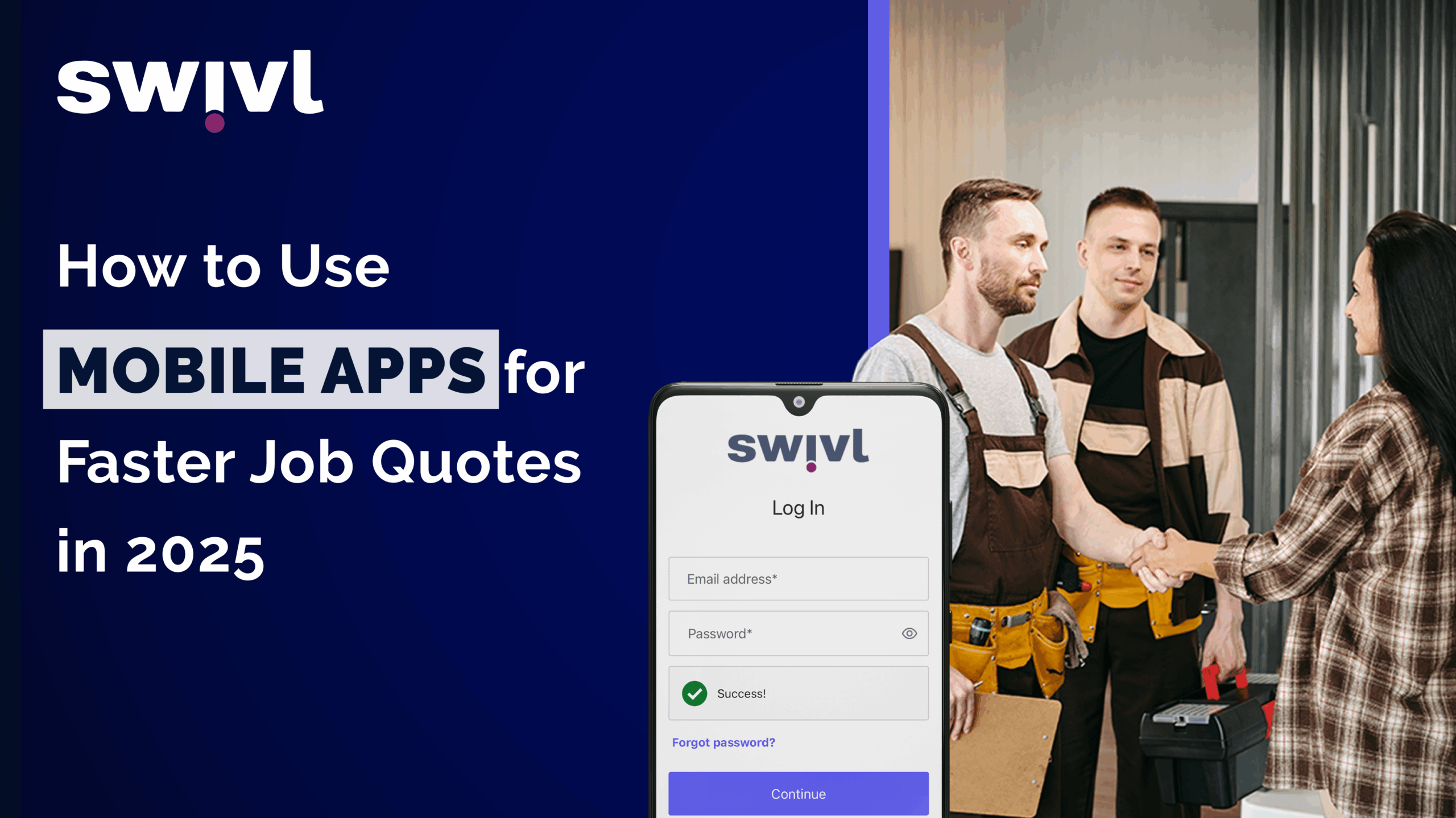Most HVAC calls start the same way someone needs help, and they need it fast. But if your booking process still depends on missed calls, voicemail tags, or someone manually checking a calendar, you’re already losing time and probably customers too.
Today’s homeowners and facility managers expect to book appointments online, get instant confirmations, and move on. That’s not a trend it’s the new standard. Offering HVAC online booking doesn’t just save you admin time. It helps you capture more jobs, reduce scheduling mistakes, and deliver the kind of seamless experience people expect from a modern service company.
Today’s HVAC customers expect the ability to schedule appointments online, at their convenience, from any device. Whether it’s a late-night emergency or a routine seasonal check-up, the expectation is instant access and transparent scheduling. For HVAC businesses, this is not only a customer service upgrade but a strategic opportunity to streamline operations and capture more leads.
The good news: you don’t need a developer or technical expertise to implement a robust online scheduling system. With no-code tools, HVAC companies of any size can deploy a fully functional HVAC online booking platform within minutes, complete with service selection, time slot management, calendar syncing, automated reminders, and integrated payments.
Why HVAC Businesses Need Online Booking in 2025
The shift toward HVAC appointment scheduling online is more than just a digital trend, it addresses real operational challenges faced by service providers. By enabling 24/7 booking through a dedicated HVAC customer self-service portal, businesses offer unmatched convenience to clients, eliminating the need for calls during office hours.
This flexibility not only boosts customer satisfaction but also increases the chances of securing more appointments. Online booking platforms help capture and retain leads that might otherwise be lost due to missed calls or delayed responses. They also automate workflows by syncing bookings directly with technician calendars, reducing human error and improving dispatch efficiency.
Many HVAC booking apps support prepayments or deposits, which improves cash flow and minimizes no-shows. Moreover, a branded and responsive booking interface elevates the business’s professional image, building trust in a competitive market. As the business expands, these digital systems scale effortlessly, supporting new services, technicians, or regions without adding to administrative overhead.
Step-by-Step: Setting Up HVAC Job Booking Without Code
Implementing a no-code HVAC booking system involves a series of configuration steps, each designed to streamline the customer journey while supporting your internal operations.
Step 1: Select a No-Code Booking Platform
Swivl makes it simple for HVAC businesses to get started with online scheduling no coding or third-party tools required. When you sign up, you can create a fully branded business website for free, complete with a built-in appointment booking feature. This allows your customers to schedule HVAC services directly from your site, 24/7, without any manual coordination or back-and-forth calls.
Once a booking is made, it automatically flows into the Swivl CRM, where your team can view customer details, service requests, and availability. From there, dispatchers can assign the job to the right technician based on skill set, location, and availability all from a single, centralized platform.
With Swivl, your booking system doesn’t just capture appointments it powers your entire service workflow, from online request to technician assignment, making your operations faster, smarter, and fully connected.
Step 2: Customize the Booking Interface
Your booking interface should do more than collect appointments it should build trust and reflect your brand. With Swivl, you can easily design a customer-facing booking page that matches your business identity, from logo and colors to tone and layout. No coding required.
Make sure the form captures all essential information: customer name, contact details, service type, preferred time slot, and service address. To further streamline job prep, Swivl also lets you add optional fields like equipment photos, job notes, or even preferred technician selection. This not only improves service accuracy but also reduces technician callbacks. Using Swivl’s intuitive drag-and-drop builder, HVAC businesses can create a clean, branded, and mobile-responsive booking experience in minutes, making it easy for customers to engage and even easier for your team to act.
Step 3: Define Services, Durations, and Pricing
To create a transparent and efficient booking process, it’s important to preload your most common services with standardized durations. This reduces ambiguity and helps your team schedule accurately.
- Standard AC Repair: Typically runs 1–2 hours, and U.S. homeowners spend $150–$450 per service call.
- Annual AC Tune-Up: On average, costs $70–$200 (some sources report around $130), and usually takes 45–90 minutes.
- Furnace Tune-Up/Maintenance: Averages $80–$200, with a typical duration of 45–60 minutes.
- Emergency HVAC Visit: Costs can double or triple during off-hours, commonly $140–$250 per hour.
Step 4: Sync the Booking Tool with Your Calendar
To avoid double-bookings and scheduling conflicts, integrate the tool with your business calendar. Most platforms sync with Google Calendar, Outlook, or iCloud in real time. When using a system like Swivl calendar updates also reflect technician availability and travel times, enabling dynamic scheduling.
Step 5: Set Up Automated Notifications and Reminders
Automated confirmations and reminders play a key role in reducing no-shows and minimizing manual follow-ups. A well-configured system should automatically send booking confirmations, timely reminders (such as 24-hour and 1-hour alerts), rescheduling options, and post-service feedback requests. Depending on your setup and customer preferences, these notifications can be delivered via SMS, email, or WhatsApp, ensuring consistent communication throughout the service journey.
Step 6: Enable Online Payments
To safeguard your revenue and maintain healthy cash flow, it’s essential to enable payment options within your booking platform. Offer customers flexibility through credit or debit card payments via Stripe or Razorpay, UPI for Indian users, PayPal for international clients, or traditional pay-on-site options for larger or repeat jobs. Platforms like Swivl support multiple payment methods and allow you to customize payment terms, whether it’s full prepayment, partial deposits, or cash-on-delivery, based on the service type and business needs.
Step 7: Embed the Booking Link Across Channels
To maximize visibility and adoption, your online booking form should be embedded across all key customer touchpoints. Integrate it directly into your HVAC company’s website, include it on your Google Business Profile, and share it across social media platforms such as Facebook and Instagram.
Adding links to email footers, and newsletters, and even using QR codes on service vehicles, invoices, or business cards can further increase accessibility. A consistently visible and easy-to-access booking interface ensures customers can schedule appointments quickly, no matter how they find you.
Best Practices to Maximize Online Booking Adoption
To ensure that your Swivl-powered HVAC online booking system delivers maximum value, it’s essential to make the scheduling interface as visible and accessible as possible across all customer touchpoints. Start by embedding clear “Book Now” calls to action across your website on the homepage, service-specific pages, and contact sections. Swivl’s booking link can also be seamlessly integrated into your Google Business Profile, social media accounts, and email communications, creating a unified and user-friendly scheduling journey.
To boost adoption, consider offering limited-time incentives through your Swivl booking page, such as discounts for first-time online appointments or loyalty benefits for repeat users. At the same time, emphasize the advantages of online booking, including 24/7 access, transparent pricing, and instant confirmation, to build trust and convenience for your customers.
For offline visibility, Swivl allows you to generate booking URLs that can be linked to QR codes. Adding these codes to invoices, service vehicles, and business cards allows customers to schedule appointments with a simple scan. Finally, by promoting your Swivl booking system through local digital advertising on platforms like Google and Facebook, you can actively capture high-intent leads and convert them directly into scheduled jobs, without the friction of phone calls or manual coordination.
Conclusion
The ability to offer HVAC appointment scheduling online without writing a single line of code is a significant advancement for the field service industry. As part of the broader shift toward online appointment scheduling for service businesses, this approach allows HVAC providers to streamline operations, reduce scheduling errors, and deliver the modern experience customers expect in 2025. No matter the size of your team, adopting a no-code solution like Swivl enables you to automate bookings, receive payments, and minimize admin tasks, all while improving service quality. This digital transformation starts with one step: setting up your HVAC booking app today.




